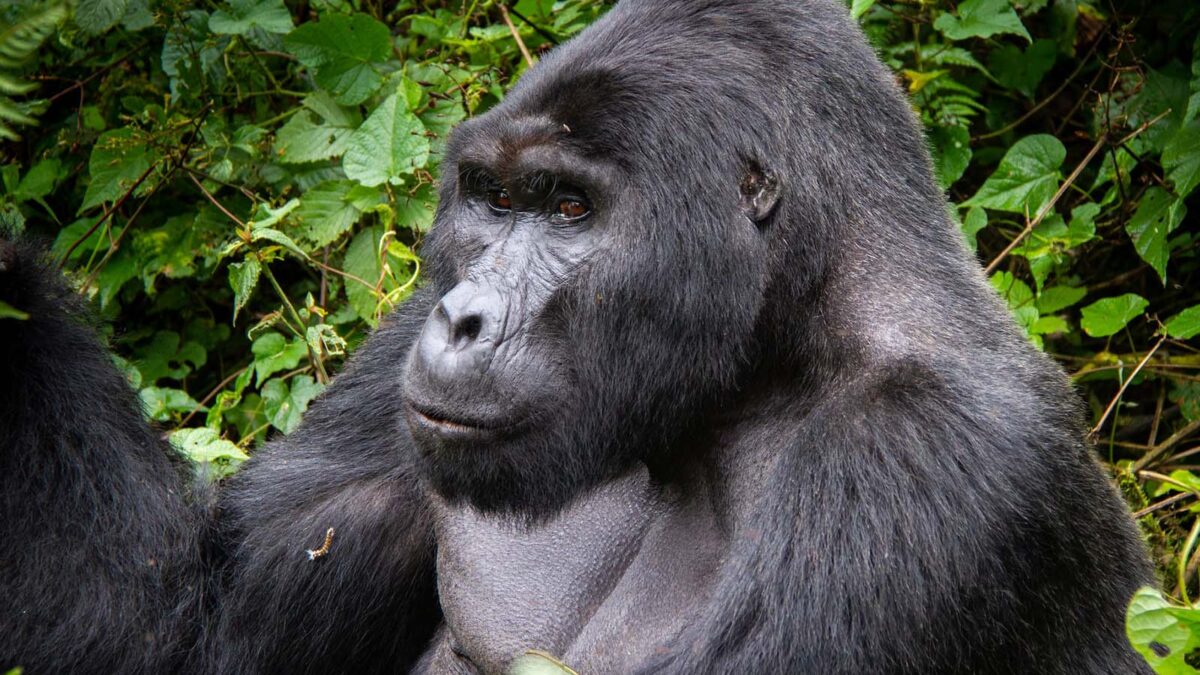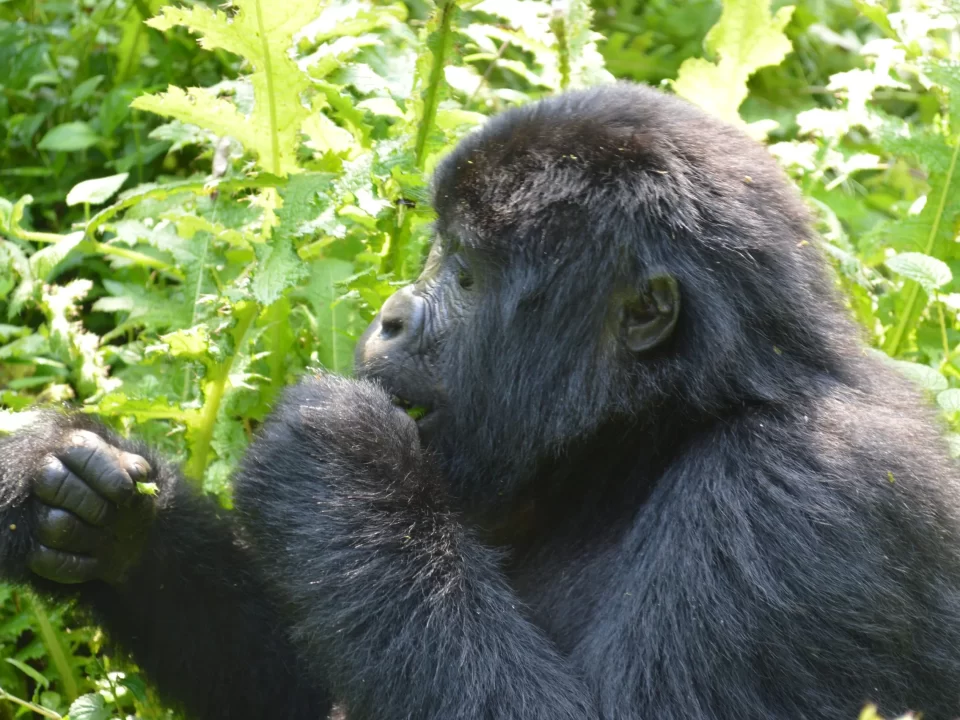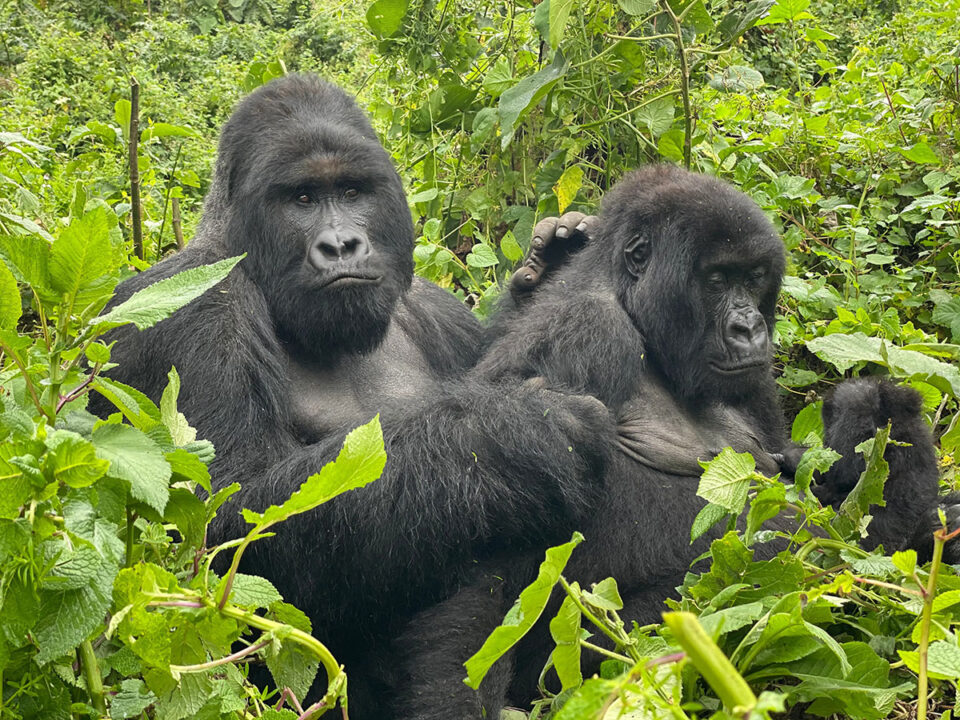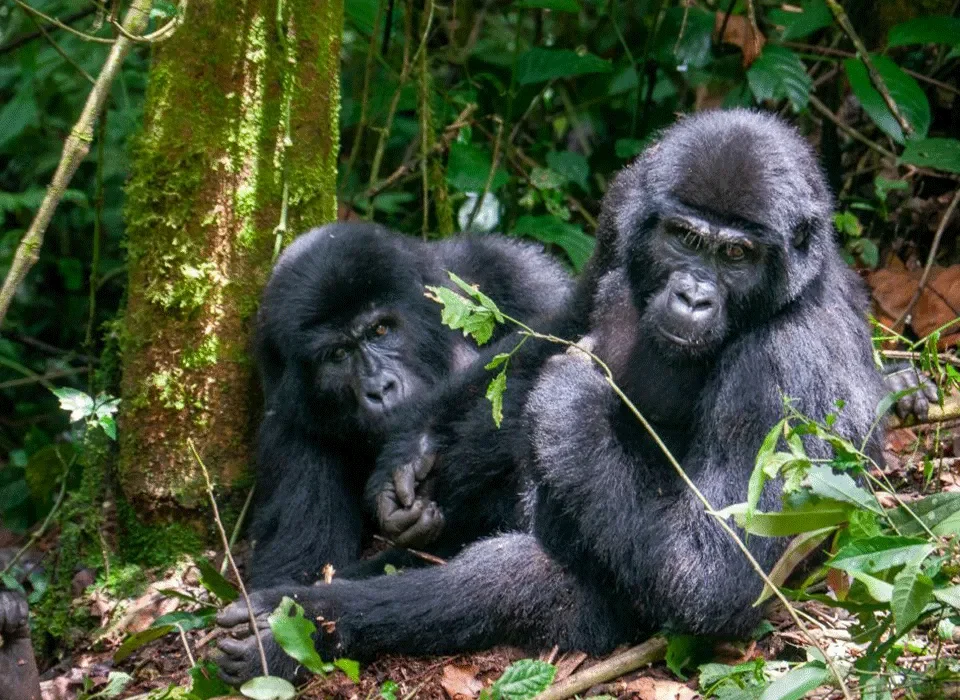Where to Go Budget Gorilla Tracking in Uganda

5 Days Mgahinga Gorillas, Golden Monkey & Lake Bunyonyi Safari
October 4, 2023
Budget Uganda Safari Tours and Holidays
October 6, 2023Where to Experience Budget Gorilla Tracking in Uganda – Bwindi Impenetrable National Park
When it comes to budget gorilla tracking in Uganda, Bwindi Impenetrable National Park emerges as a prime destination. Nestled in the south-western part of Uganda, on the fringes of the Rift Valley, this park is shrouded in mist, boasting hillsides adorned with one of Uganda’s oldest and most ecologically diverse rainforests. This ancient forest, with a history spanning over 25,000 years, is a haven for nearly 400 plant species. However, what truly sets this “impenetrable forest” apart is its role as a protector of an estimated 400 mountain gorillas – approximately half of the world’s population. Among them are several habituated groups available for tracking by intrepid adventurers.
A Haven of Biodiversity
Beyond its celebrated gorilla population, this biologically diverse region shelters around 120 mammal species, encompassing various primates like baboons and chimpanzees, as well as majestic creatures such as elephants and antelopes. The park is also a paradise for bird enthusiasts, boasting a rich avian population of about 350 species, including 23 Albertine Rift endemics.
Northern Bwindi Impenetrable National Park – Buhoma
The Buhoma region holds special significance as the pioneer location for gorilla trekking in Bwindi, dating back to 1993. Situated in the northern part of the park and characterized by lower altitudes, Buhoma is home to four habituated gorilla groups: Mubare, Rushegura, Habinyanja, Katwe, and Muyambi. These gorilla groups occasionally visit different accommodation facilities in the area, offering a memorable experience for budget-conscious travelers embarking on a gorilla trekking safari in Uganda. The trekking tradition began with the Mubare group, the first to be habituated in the park, followed by the Rushegura and Habinyanja groups in subsequent years (1997 and 2000, respectively).
Southern Bwindi Impenetrable National Park – Rushaga
For another budget-friendly gorilla tracking option, consider the Rushaga region, situated in the park’s southern expanse. Rushaga is home to seven gorilla habituated groups: Nshongi, Mishaya, Busingye, Kahungye, Bweza, Kutu, Bikingi, Muchunguzi, and Rwigi. This sector’s higher altitude is characterized by rolling hills, creating ideal conditions for gorilla families to establish separate territories on different hills. Travelers trekking gorillas in Rushaga sector are rewarded with breathtaking scenic views. On clear days, they can even catch sight of the Virunga mountain range in neighboring Rwanda and Uganda, including peaks like Mountain Gahinga, Muhabura, Sabinyo, Karisimbi, and more. After the gorilla trek, travelers can enjoy a serene canoe ride on Lake Mutanda, one of Uganda’s two lava lakes, providing a tranquil post-trek experience.
Eastern Bwindi Impenetrable National Park – Ruhija
Heading eastward within the park, you’ll discover the Ruhija sector, which hosts four gorilla habituated families: Bitukura, Oruzogo, Kyaguriro, and Mukiza. Ruhija is nestled at an altitude of 2350 meters, making it 1000 meters higher than Buhoma. Despite its elevated location, Ruhija offers travelers more than just gorilla tracking. It’s an excellent spot for birdwatching, providing opportunities to interact with indigenous Batwa communities, and explore stunning waterfalls, all adding depth to your adventure.
Upper South Bwindi Impenetrable National Park – Nkuringo
In the upper south-western corner of the park, Nkuringo presents an awe-inspiring landscape within Bwindi Impenetrable forest. Although trekking here may be a bit more demanding due to steep terrain, encountering the endangered mountain gorillas in this area is an experience worth every effort. Nkuringo is home to only two gorilla habituated families, aptly named Nkuringo and Christmas. Beyond gorilla trekking, the region offers a myriad of other activities, including hiking, nature walks, cultural encounters, birding, and much more. Bwindi Impenetrable Forest stands as the ultimate destination for travelers seeking to come face to face with endangered mountain gorillas in their natural habitat.
For comprehensive information on budget gorilla tracking in Uganda’s Bwindi Impenetrable National Park, contact Trek Africa Expeditions




